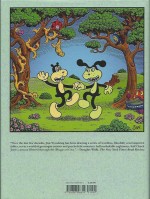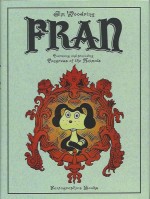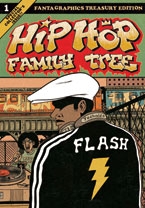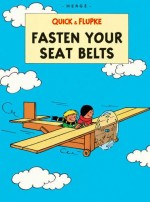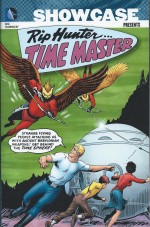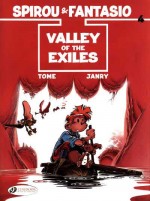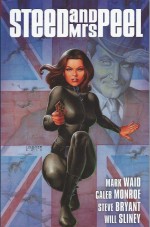
By Morris Heggie & Peter Davidson (DC Thomson)
ISBN: 978-1-84535-506-7
Last-Minute Christmas Dilemmas Solved: How the Holidays Have To Be celebrated… 10/10
The Broons is one of the longest running newspaper strips in British history, having run almost continuously in Scottish newspaper The Sunday Post since its first amazing appearance in the March 8th 1936 edition: the same issue which launched mischievous wee laddie Oor Wullie.
Both the boisterous boy and the copiously populated, engaging working class family comedy under discussion here were created by journalist, writer and Editor Robert Duncan Low with DC Thomson’s greatest artist Dudley D. Watkins and, once the strips began to be collected in reprint editions as Seasonal annuals, those books alternated stars and years right up to the present day.
This Christmas it’s a Broons year and the latest compilation is just as packed with all-ages fun, rambunctious slapstick hilarity and comfortably gentle domestic warmth, courtesy of current custodians of mirth Morris Heggie & Peter Davison, scrupulously continuing the tradition of inviting, resplendent and amusing Scots cultural domination…
Low (1895-1980) began at DC Thomson as a journalist, rising to the position of Managing Editor of Children’s Publication and launching, between 1921 and 1933, the company’s “Big Five†story papers for boys: Adventure, The Rover, The Wizard, The Skipper and The Hotspur.
In 1936 his next bright idea was the “Fun Sectionâ€: an 8-page pull-out comicstrip supplement for the Sunday Post.
The clear stars were The Broons and Oor Wullie and Low’s most brilliant notion was to devise both as comedies in the charismatic Scottish idiom and broad unforgettable vernacular where, supported by features such as Auchentogle by Chic Gordon, Allan Morley‘s Nero and Zero, Nosey Parker and other strips, they laid the groundwork for the publisher’s next great leap.
In December 1937 Low launched the first DC Thomson comic weekly. The Dandy was followed by The Beano in 1938 and early-reading title The Magic Comic in 1939. War-time paper shortages and rationing curtailed the strip periodical revolution, and it was 1953 before the next wave of cartoon capers releases. The Topper started the ball rolling again in the same year that Low & Ken Reid created Roger the Dodger for The Beano…
Low’s greatest advantage was his prolific illustrator Dudley Dexter Watkins, whose style – more than any other – shaped the look of DC Thompson’s comics until the bombastic advent of Leo Baxendale shook things up in the mid-1950s.
Watkins (1907-1969) had started life in Manchester and Nottingham as a genuine artistic prodigy before entering Glasgow College of Art in 1924. It wasn’t long before he was advised to get a job at burgeoning, Dundee-based DCT, where a 6-month trial illustrating boys’ stories led to comic strip specials and some original cartoon creations.
Percy Vere and His Trying Tricks and Wandering Willie The Wily Explorer made him a dead cert for both lead strips in the Sunday Post‘s new Fun Section and, without missing a beat, Watkins later added The Dandy‘s Desperate Dan to his workload in 1937 and The Beano‘s placidly outrageous Lord Snooty seven months later.
Watkins soldiered on for decades, drawing some of the most lavishly lifelike and winningly hilarious strips in comics history. He died at his drawing board on August 20th 1969.
For all those astonishingly productive years he had unflaggingly drawn a full captivating page each of Oor Wullie and The Broons every week, so his loss was a colossal blow to the company. DC Thomson reprinted old episodes of both strips in The Sunday Post and the Annuals for seven years before a replacement was found whilst The Dandy reran Watkins’ Desperate Dan stories for twice that length of time.
Instantly an undeniable, rock solid facet of Scots popular culture, the first Broons Annual (technically Bi-Annual) appeared in 1939, alternating with Oor Wullie right up to the present day, and for millions of readers the year doesn’t end well without them.
What’s the Set Up?: the multigenerational Broon family inhabit a tenement flat at 10 Glebe Street, in the timelessly metafictional Scottish industrial everytown of Auchentogle (or sometimes Auchenshoogle): based in large part on the working class Glasgow district of Auchenshuggle and an ideal location in which to tell gags and relate events to sentimental Scots wherever they might actually be residing.
As is always the case the adamant, unswerving cornerstone of the feature is long-suffering, understanding Maw, who puts up with cantankerous, cheap know-it-all Paw, and a battalion of stay-at-home kids comprising hunky Joe, freakishly tall Hen (Henry), sturdy Daphne, pretty Maggie, brainy Horace, mischievous twins Eck and the unnamed “ither ane†plus the wee toddler referred to only as “The Bairnâ€.
Not generally in residence but always hanging around is gruffly patriarchal buffoon Granpaw – a constant addition and comedic gadfly who spends more time at Glebe Street than his own cottage and constantly tries to impart his decades of out-of-date, hard-earned experience to the kids… but do they listen…?
Offering regular breaks from the inner city turmoil and a chance to simultaneously sentimentalise, spoof and memorialise more traditional times, the family frequently repair to their But ‘n’ Ben (a dilapidated rustic cottage in the Highlands) to fall foul of the countryside and its denizens, fish, fowl and farm-grown…
Although there’s still a wealth of older editions still available and many great spin-offs and merchandise such as The Broons Days Oot Travel Guide or Maw Broon’s Cookbook, there’s no lack of quality in modern annuals and always something worth seeing in these grand tomes.
This year’s model (by Heggie & Davidson) comprises a softcover monochrome collection featuring 96 pages of gentle gags, family frolics and gloriously slapstick shenanigans including plumbing disasters, fireplace fiascos, food foolishness, dating dilemmas, appliance atrocities, fashion freak-outs, exercise exploits and childish pranks by young and old alike…
In the town there’s a wealth of traditional problems like getting girls into Burns Night suppers, sporting specialities, pimples and plooks, grievances and dalliances with good friends, nosy neighbours and total strangers, confrontations with the constabulary and shopping shocks.
Moreover in the two years worth of strips included here all the usual holidays are honoured: Valentine’s Day, Easter, Christmas and Hogmanay. Musical moments and pet perils abound and there are even a few landmark developments such as Grandpaw’s secret lady-friend Annie…
And whilst in the country the hunt for cheap Christmas trees cause grief, hiking gets heavy, lost strangers are welcomed, family members are temporarily mislaid, animals uproariously intrude, gardens are tended – and abused – and the legendary Scottish weather takes full advantage of the timorous mortals subjected to it…
This comfortable, nigh-unchanging bastion of happy certainty and convivial celebration of a mythic (almost) lost life and time persists in these pages despite the grudging, sneaky infiltration of such hedonistic, technological and sociological interlopers as flat-screen TVs, mobile phones, dating websites and Winnebagoes, but at least you can be certain that whenever the tawdry present does intrude on proceedings, the happy multitude of the Clan Broon can be relied upon to break, lose or rubbish the offending article…
These books are timeless examples of perfect cartoon magic and you can’t really have a happy holiday without at least one of them in your life…
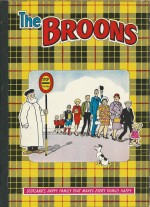
© 2013 DC Thompson & Co. Ltd. All rights reserved.


